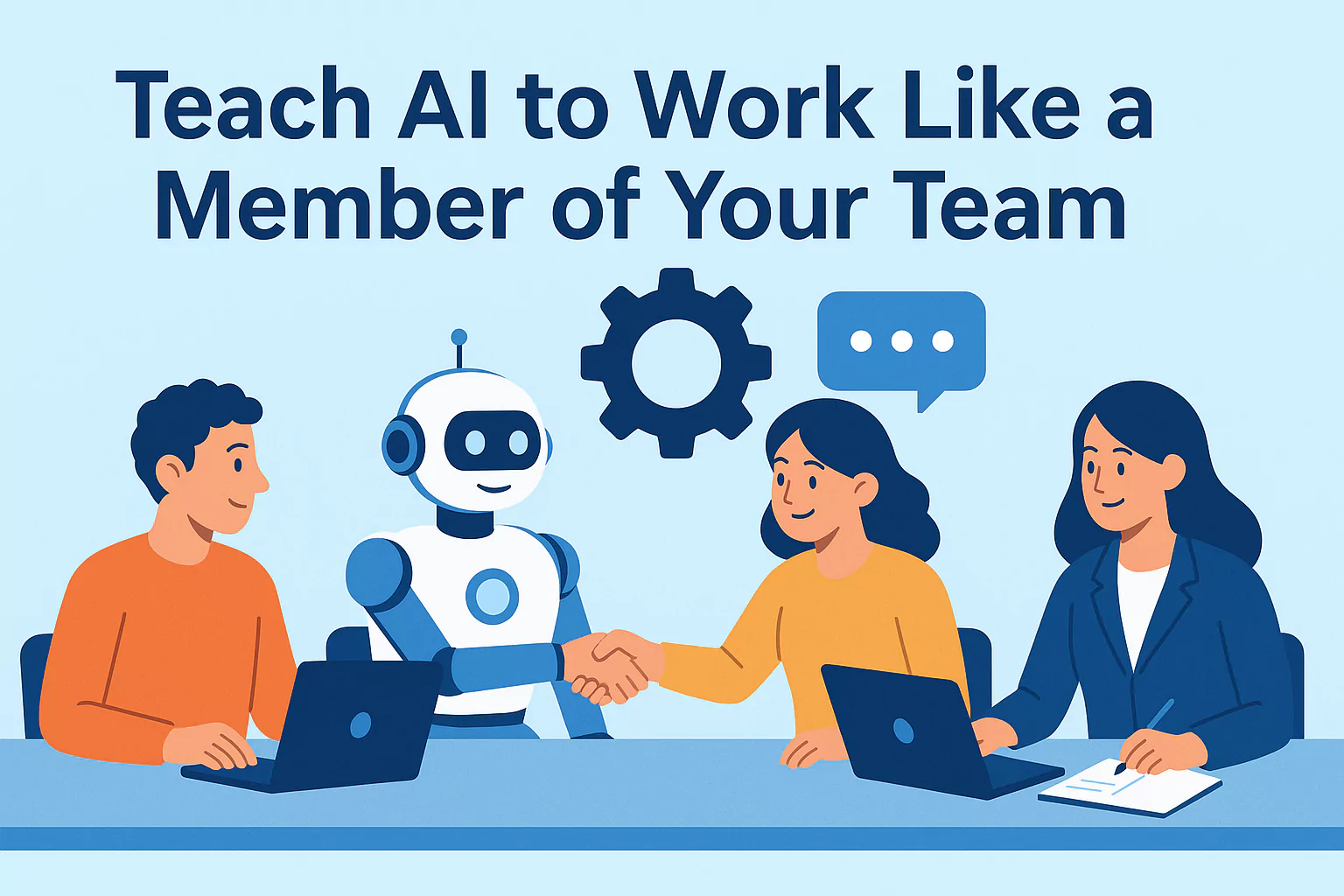How to Train AI to Work Like One of Your Team Members

To make AI work like a true member of your team, you must treat it not as a tool, but as a trainable assistant. This means feeding it the right data, defining clear roles, setting up workflows, and continuously refining its tasks based on feedback—just as you would onboard and coach a new employee.
Why Treat AI as a Team Member?
From Tool to Teammate
Most businesses use AI for simple automation or data processing. However, AI’s true potential lies in becoming an integrated part of your team—handling repetitive tasks, enhancing decision-making, and even communicating with customers or colleagues based on learned patterns.
Benefits of Integrating AI into Your Team
- Increased efficiency through task automation
- 24/7 productivity with no downtime
- Data-backed decision support in real-time
- Consistent performance across functions
- Scalability without hiring additional staff
Step-by-Step: How to Train AI Like a Team Member
1. Define the AI’s Role
Before anything, clearly outline what you want the AI to do:
- Is it a virtual assistant handling scheduling?
- A content generator for marketing?
- A customer service agent?
Just like hiring, you need a job description for your AI.
2. Feed It the Right Data
AI learns from data. You need to:
- Provide clean, structured datasets
- Include examples of both good and bad outcomes
- Use relevant communication logs, documents, or workflows
The more contextual and role-specific your data is, the more useful the AI becomes.
3. Set Up Tools and Integrations
Ensure your AI connects with the tools your team uses:
- CRM systems
- Email platforms
- Chat applications (like Slack or Teams)
- Project management tools (like Trello, Asana, or Jira)
Integration allows the AI to interact within your existing ecosystem, just like any team member would.
4. Give It Access, With Boundaries
Assign user permissions just like you would for a human:
- Limit access to sensitive files unless required
- Use role-based access control (RBAC)
- Log and monitor AI activity
This prevents data leaks or operational errors.
5. Train With Real-World Scenarios
Use simulated or historical scenarios to teach:
- How to respond to customer inquiries
- How to prioritize tasks
- How to format reports or updates
This stage is like shadowing and mentoring a new employee.
6. Set Up Feedback Loops
No AI is perfect on day one. Use:
- Regular performance reviews
- Team feedback
- Error correction sessions
Use feedback to refine AI behavior and outputs, just as you would coach a junior team member.
7. Promote Collaboration, Not Replacement
Make sure the rest of your team knows the AI is a collaborator, not a competitor:
- Explain how it supports their work
- Show time saved or accuracy improved
- Allow team members to customize interactions with it
Real-World Use Cases
AI as a Marketing Assistant
Trained on brand tone, previous campaigns, and audience data, an AI can:
- Write blog posts
- Suggest keywords
- Schedule social posts
- A/B test ad copy
AI as a Customer Service Rep
Using historical chat logs and product documentation, AI can:
- Handle FAQs
- Escalate complex issues
- Provide instant responses across time zones
AI as a Sales Analyst
Given access to CRM and sales history, AI can:
- Score leads
- Predict churn
- Generate personalized pitch decks
Pitfalls to Avoid
- Under-training: Not giving the AI enough relevant examples
- Over-automation: Replacing human judgment in complex decisions
- Lack of oversight: Letting AI operate without monitoring or updates
- Ignoring user input: Not involving team members in the training process
Final Thoughts: AI is Your New Teammate, Not Just Tech
Teaching AI to work like a member of your team doesn’t happen overnight. It requires planning, data, training, and a people-first mindset. But when done right, AI becomes more than just a tool—it becomes a reliable coworker that scales with your business, improves performance, and empowers your human team.









